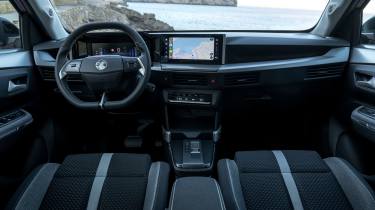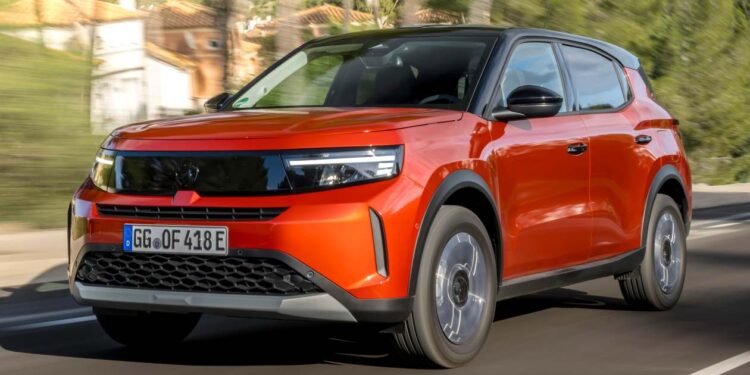Joining the line-up in 2025 was the Frontera Extended Range, which comes with a larger 54kWh battery and a much more appealing 253-mile range – five miles more than the Citroen e-C3 Aircross with the same battery.
Given the Frontera Electric’s relatively small 44kWh battery, it’ll be able to top up from 20 to 80 per cent of its capacity in 26 minutes, despite having a fairly average recharge speed of 100kW. The same maximum charge rate will see a 20 to 80 per cent charge in the Extended Range model take 28 minutes.
An 11kW on-board charger is also fitted as standard – which would cost you £360 in the Citroen e-C3 Aircross – but most will likely charge at home, utilising a typical 7.4kW wallbox charger. It’ll take 7 hours to fully recharge the 44kWh version, while the 54kWh Extended Range Frontera will take 8.5 hours.
Vauxhall has rolled out its ‘Plug & Go’ offer across its pure-electric models recently and the Frontera also benefits from this. The deal gives the customer £500 towards a home wallbox (an Ohme Pro unit), online credit with Octopus Electroverse or credit for a Tesco charger.
The ‘Plug & Go’ bonus includes a relatively industry-standard battery warranty for eight years/100,000 miles, plus three years of roadside assistance.
| Model | Battery size | Range | Insurance group |
| Electric | 44kWh | 186 miles | N/A |
Tax
Company car drivers paying Benefit-in-Kind (BiK) tax will find the Vauxhall Frontera Electric to be their best choice. The EV incurs three per cent BiK while both hybrids sit in the 29 per cent bracket. EVs no longer qualify for free road tax, but they only have to pay a vehicle excise duty (VED) fee of £10 per year.
Depreciation
The Frontera isn’t expected to hold its value particularly well, with the all-electric model retaining 37 per cent after three years and 36,000 miles and the hybrid retaining 46 per cent over the same period.
While the exterior is neatly styled, the interior design seems basic, although it should stand up to family life

|
Pros |
|
| Cons |
|
Interior, design & technology
The new Frontera might be an SUV like its namesake from the nineties, but that’s really where the similarities end. Up front the new Frontera has the same ‘Vizor’ headlights and grille arrangement seen across the brand’s entire line-up, giving a style that’s distinct not only from its competitors, but also from its Citroen e-C3 Aircross sister car. The Frontera’s blocky side profile and upright stance give it an almost MPV-like shape. Specifying the £400 white wheels and white roof has a dramatic effect on the model’s style, though, and from some angles it looks like it’s mimicking the Land Rover Defender, especially with Khaki Green metallic paint.


